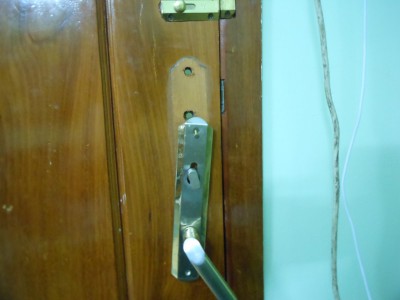
Around the world, rural communities are fighting back hard against the great wind power fraud.
Wherever wind farms have appeared – or have been threatened – big numbers of locals take a set against the monsters being speared into their previously peaceful – and often idyllic – rural communities. Their anger extends to the goons that lied their way to development approval – and the bent officials that rubber-stamped their applications and who, thereafter, help the operators ride roughshod over locals’ rights to live in and enjoy the peace and comfort of their own homes and properties.
Australians are in there fighting hard – with the numbers solidly against wind power outfits that cause nothing more than community division and open hostility where ever they go (see our posts here and here and here)
The Irish have already hit the streets to bring an end to the fraud: some 10,000 stormed Dublin back in April. The sense of anger in Ireland – as elsewhere – is palpable (see our post here).
Rural Ontario is seething, with locals taking the law into their own hands – sabotaging turbines and construction equipment in order to defend their (once) peaceful and prosperous communities (see our post here).
And the Scots have joined in – tearing down MET masts in order to prevent wind power outfits from gaining a foothold and, thereafter, violating their right to live free from turbine terror (see our post here).
The back-lash against wind power outfits has been mirrored in the US – with communities rallying to shut down projects before they begin; and a raft of litigation launched by neighbours (see our post here).
In the US, even turbine hosts – who we’re repeatedly told by the wind industry’s pseudo-scientist advocates NEVER complain about turbine noise impacts on their homes and health – have issued civil actions against the companies that pay them handsomely to let them plant their giant fans in the top paddock. In Texas, 23 of them are suing 2 wind power outfits for damages caused by excessive noise – which has led to health problems and homes being abandoned – true to form, the companies involved had lied to the farmers concerned about the noise their turbines would generate from the very beginning (see our post here).
Now, farmers in Ohio have taken up the battle to defend their homes, properties and families from turbine tyranny.
Fighting Big Wind
Telegraph-Forum
Todd Hill
7 November 2014
“Stop the wind turbines!” “Say no to wind turbines!” “Wind turbines, go away!”
Drive around rural Ohio long enough, particularly the parts of the state that are flat and dominated by large, agricultural fields, and you’re bound to see signs voicing these sentiments in the front yards of property owners.
Fifteen miles north of Mansfield, just north of the Richland County line near the Huron County village of Greenwich, red and white anti-wind farm signs have sprouted like weeds. A subsidiary of Windlab Developments USA Ltd. wants to build a 25-turbine wind farm on 4,600 acres of leased land just south and east of the village.
The Greenwich Wind Park was approved by the Ohio Power Siting Board in late August.
“We first identified the site and approached landowners to discuss the project concept in 2010. Since that time, the project has benefited from significant community support throughout an extensive development and OPSB process,” Monica Jensen, vice president of Windlab Developments USA, said.
“Now that the project has been approved, Windlab looks forward to completing this project for the benefit of both involved landowners and the neighboring community.”
Well, not so fast.
Kevin and Marcia Ledet live on Omega Road, square in the middle of where the Greenwich Wind Park is supposed to go. They, along with about 27 other local residents, have formed Greenwich Neighbors United, and they’re not taking this wind park lying down. They have their reasons.
“My parents aren’t in their home anymore and we were going to sell their home,” Marcia Ledet said. “The guy called up and said, ‘Well, what about the wind situation?’ He’s backed out, he doesn’t want to buy it now because he doesn’t think it will be a good selling thing to have turbines in the neighborhood.”
The Ledets’ home sits less than a mile north of a busy CSX railroad track, with two even busier CSX tracks a couple miles south of that, typical for northern Ohio. And a variety of pungent smells waft on the breeze.
“They’ll say the railroads make noise and you have all these chicken and hog farms. Hey, this is agriculture,” Kevin Ledet said.
Dennis Alvert and Marcia and Kevin Ledet of Greenwich, Ohio, are unhappy with the environmental effects of a wind turbine farm proposed for their area.
“I love that they call this a wind farm, because what are you farming here? You’re making an industrial power-generating facility superimposed on a community, and it will alter it forever. Our property rights are being infringed upon.”
Ledet said he’s not against wind turbines, although like most opposed to these projects, he certainly sounds as if he is. He complains about federal subsidies “throwing a lot of good tax money” at wind farms, although a federal tax credit for turbines expired last year, with no signs that Congress intends to rejuvenate it any time soon.
Still, the Ledets probably wouldn’t be opposed to wind energy if it were coming from Texas or Oklahoma, where the wind power industry has really taken off. Here in Ohio, only two wind farms are in operation, in Van Wert and Paulding counties. Several more have been either approved by the OPSB or are in pre-application status with the state agency, including two in Richland and Crawford counties, the much larger Black Fork Wind Farm west of the city of Shelby and near the village of Tiro, and the Honey Creek Wind Farm in Crawford and Seneca counties.
Within just the past year, the legislative environment for wind energy in Ohio has grown progressively more unfavorable.
Gov. John Kasich has frozen the state’s renewable portfolio standard, which had stipulated that 25 percent of the electricity sold in Ohio must be generated from alternative energy sources, such as wind, located here by 2025. That mandate is now stuck at a much lower 2014 level, although the freeze is temporary.
Dennis Alvert discusses the environmental effects of a wind turbine farm that is proposed for the Greenwich, Ohio, community.
“It’s not a freeze at all, because if they don’t give us something that works we go back to the old rules, the old standards, which I don’t think fit the state,” Kasich said.
“The numbers that got set were pulled out of thin air. You don’t want to put burdens on companies in this state where they can’t possibly meet the rules, and we don’t want to burden the consumers where we’re costing them a fortune, so we’re going to do a reset.”
In addition, the governor signed over the summer legislation, which never received any public testimony, revising the setback provisions for wind farms from the outer wall of the nearest habitable structure to the edge of a property line, essentially rendering these projects impossible in a heavily populated state like Ohio.
“Look, here’s the issue. Private property rights are important. People choose to live somewhere, and you don’t just go in there and disrupt their life. The idea that you have a setback from your property line rather than your personal home I think makes a lot of sense,” Kasich said.
Will the new setbacks be the death knell for wind projects like Greenwich and Black Fork?
“That question is up in the air,” Dayna Baird Payne, a Columbus-based lobbyist for the American Wind Energy Association, said.
“There is language in the statute, House Bill 483, that projects certified as of early September (again, Greenwich Wind Park was approved in late August) will be grandfathered in. But some of the language in the statute suggests that if a project files an amendment, that kicks it out of grandfathering. There may be a rule coming soon from the OPSB explaining a little about the process.”
“There are not any immediate plans to do that,” Matt Butler, public outreach manager for the OPSB, said.
“The setback change has a number of legal issues that are subject to further interpretation before we can issue any additional clarification on that in a case that comes before the board.”
Kevin and Marcia Ledet of Greenwich, Ohio, discuss the negative effects not often addressed by the wind turbine farm advocates.
The energy marketplace also is challenging for the wind industry right now, given the abundance of natural gas being extracted from the Marcellus and Utica shale plays, along with a general decline in energy demand that’s persisted since the 2007-09 recession.
Still, the members of Greenwich Neighbors United aren’t taking any chances. They’re hoping to litigate the wind park to death before it gets off the ground, a strategy that’s so far been working for the opponents of the Black Fork Wind Farm.
“Windlab had an informational meeting, and just prior to that they took out a big, color advertisement in the newspapers that says how marvelous this is. It shows a little girl with these pinwheels on a prairie with some turbines,” Kevin Ledet said.
“It was an amicable meeting, but I told them we would fight them tooth and nail, take them all the way to the Supreme Court, whatever we have to do.”
Dennis Alvert, another opponent, questioned why Windlab has chosen Huron County, where the wind can be calm for days on end during the summer. There are, however, several power transmission lines stretched across the Buckeye State.
“The alarm for us is the way they have done business so covertly. They spend three to four years in an area getting their ducks in a row before they make an announcement,” he said.
Indeed, a flow chart showing the approval process for a wind project, provided by Windlab, has the first public mention (a legal notice in a local newspaper) more than halfway down the page.
“These people, they know the game we’re playing, and we don’t. By the time we got on board with this, the bus was already over the hill, we never even saw the taillights,” Ledet said.
“Everyone we talked to, they thought it was a done deal, there’s no sense in fighting, forget about it. And half didn’t even know what was going on,” Marcia Ledet said, adding Greenwich Neighbors United is $30,000 in debt.
The group is having its first fundraiser, a community chili rally, Friday from 5 to 8 p.m. at the South Central K-8 School, 3305 Greenwich Angling Road.
“And we’re selling hats,” she said. “Five dollars if you wear them, $10 if you don’t. If you think they’re ugly, you should see the wind turbines.”
Telegraph-Forum


Yet more examples of the same tactics that are used here in Australia, being used in other countries. It’s fair to say they are in collusion and are all following the same handbook – how to decimate a society and get your own way.
Well done to those who are seeking to have the setback being taken from a property boundary not the residence – a step in the right direction for making it difficult for these things to be driven into a community’s life. Well done also to those ‘host’ farmers who are taking a company to court as a result of the lies they were told.
Obviously the companies are finding it difficult to accept that we are no longer stupefied by their spin.
The windweasel greentard scum are full of BULL SHIT, and when they open their mouths to spruik about giant fans the bull shit comes pouring out.